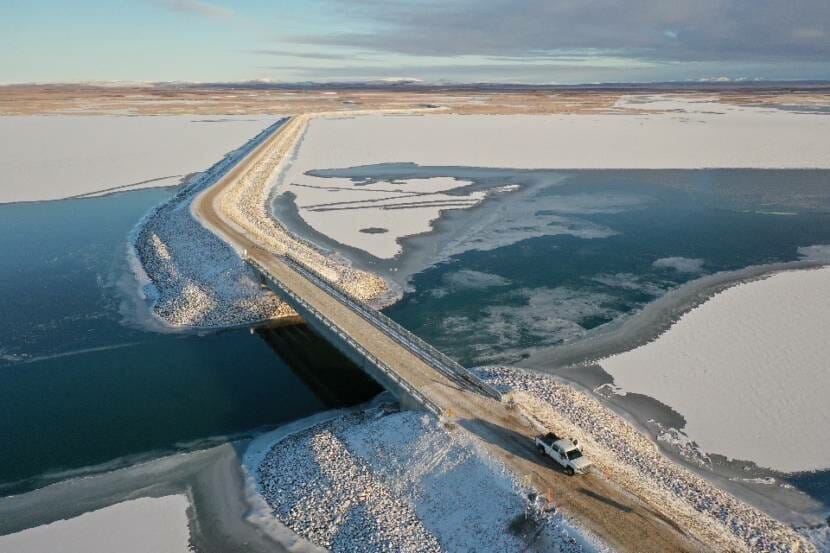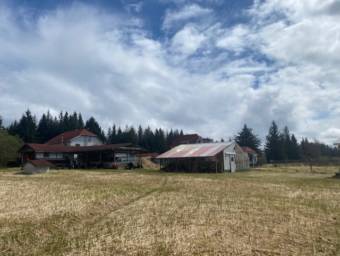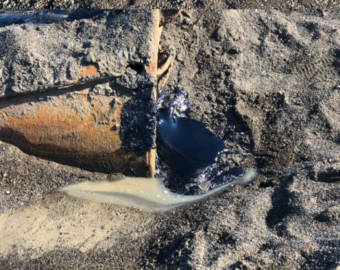
After two years of construction, the Kivalina Access Road project is now usable by the community. It’s the first step in the process to potentially relocate the entire Northwest Alaska village from the threat of an eroding coast and rising sea levels.
Kivalina sits on a barrier island, surrounded by the Chukchi Sea. The area is prone to heavy wind and rainstorms. The protection of sea ice has become less reliable. Sea levels have risen with climate change, and so the ocean has chewed into the shore.
“It was always eroding,” said tribal administrator Millie Hawley. “We’re on a small spit of land that has diminished in size over the last century.”
The storms also bring the risk of flooding. Hawley said it had been difficult to evacuate people from the village during emergencies.
“According to the U.S. Coast Guard, it takes at least a day or two to come assist us,” Hawley said. “In a state of emergency, that’s just not acceptable.”
The solution was to build an eight-mile gravel road from the northern part of the community near the airport. The road stretches over the Kivalina Lagoon, allowing evacuees to head to a higher ground area known as K-Hill.
After three years of planning and two years of construction, the lion’s share of the road was completed at the end of October. Jonathan Hutchinson is the project manager with the state Department of Transportation.
“The project is substantially complete,” Hutchinson said. “There’s a need to install dust pallets next summer, and without getting into details, minor concrete finish work on the bridge.”
Hutchinson said the road is usable now, though that has brought up a new concern.
“One of the safety concerns that I’ve heard from the community has been lighting the route,” Hutchinson said. “Because you’re crossing the lagoon, everything’s going to be dark. Typically late fall, it’s going to be pretty dark by then when you’re wanting to evacuate on that road.”
With the new road, the community is also looking to relocate its school.
It’s part of a wider conversation to move the entire village and its more than 400 residents. A similar move was made by residents of the Western Alaska village of Newtok.
Residents of Shishmaref near the Bering Sea have discussed a move as well. Some scientists estimate the entire community could be underwater by 2025. Hutchinson said there is already a school site in mind.
“At the very end of the road, we’re putting a staging pad that’s intended to support future development in that area for the construction of the school,” Hutchinson said.
Hawley with the tribe said final inspections on the road are set to happen in early summer. For now, she said locals are getting use out of the new road.
“It’s been used every single day for subsistence,” Hawley said. “We’ve got access to our fishing sites even if the lagoon didn’t freeze over; we’re able to go there.”
As for the school, construction for that project is expected to break ground late next fall.


